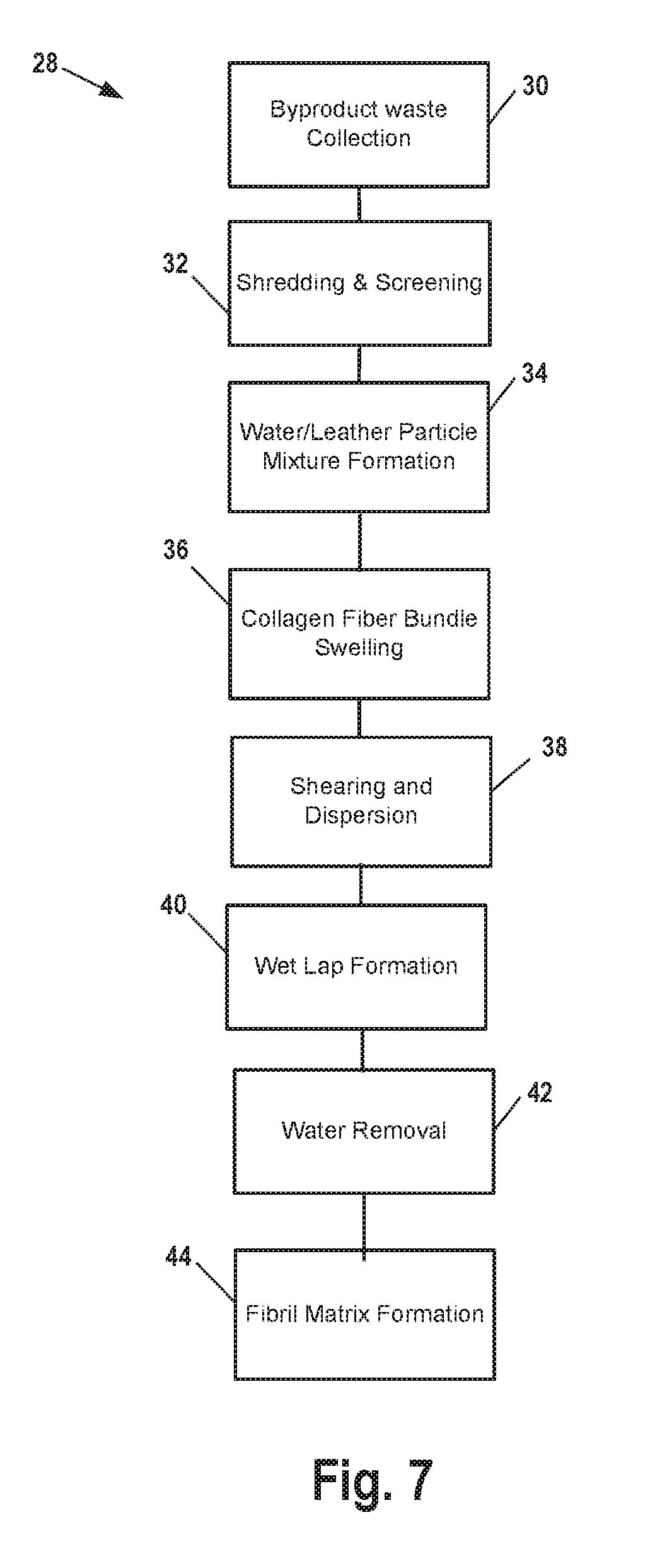Dispersion processing aids for the formation of a leather material
a technology of dispersion processing and leather, which is applied in the field of dispersed leather products, can solve the problems of reducing affecting the quality of natural leather, and affecting the production efficiency of bonded leather type synthetic leather, etc., and achieves improved wet lap strength, improved de-watering, and physical manipulation. convenient
- Summary
- Abstract
- Description
- Claims
- Application Information
AI Technical Summary
Benefits of technology
Problems solved by technology
Method used
Image
Examples
Embodiment Construction
[0037]The dispersion processing aids may be used in leather substrate formation processes described generally in the present disclosure.
[0038]Collected leather waste is physically processed by shredding or grinding to create leather particles of desired size. The desired size may refer to particle size that provides an apparently even dispersion of leather particles in the leather particle / water mixture. That is the desired size may provide a non-agglomerated pieces or leather particles.
[0039]Then, the leather particles are combined with water to form a particle / water mixture. This mixture is subjected to physical mixing or agitation by mechanical dispersion devices.
[0040]Dispersion processing aids may be added to the particle / water mixture. A potential dispersion processing aid may be a polyvinyl alcohol. Potential polyvinyl alcohols may be partially hydrolyzed to a degree greater than 95%, and having a viscosity of greater than 500 centipoise (cP). A potential polyvinyl alcohol ma...
PUM
| Property | Measurement | Unit |
|---|---|---|
| thickness | aaaaa | aaaaa |
| tensile strength | aaaaa | aaaaa |
| viscosity | aaaaa | aaaaa |
Abstract
Description
Claims
Application Information
 Login to View More
Login to View More - R&D
- Intellectual Property
- Life Sciences
- Materials
- Tech Scout
- Unparalleled Data Quality
- Higher Quality Content
- 60% Fewer Hallucinations
Browse by: Latest US Patents, China's latest patents, Technical Efficacy Thesaurus, Application Domain, Technology Topic, Popular Technical Reports.
© 2025 PatSnap. All rights reserved.Legal|Privacy policy|Modern Slavery Act Transparency Statement|Sitemap|About US| Contact US: help@patsnap.com



